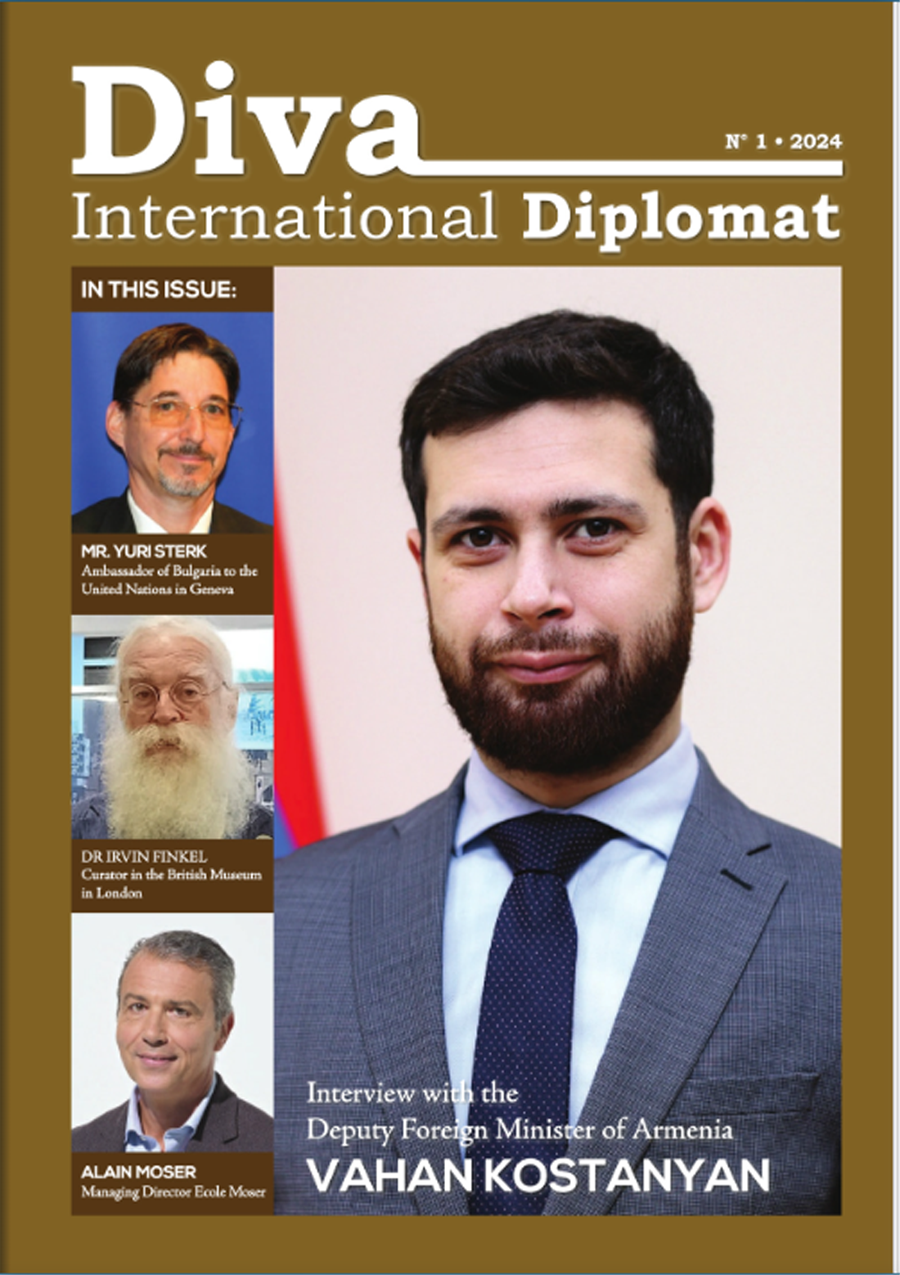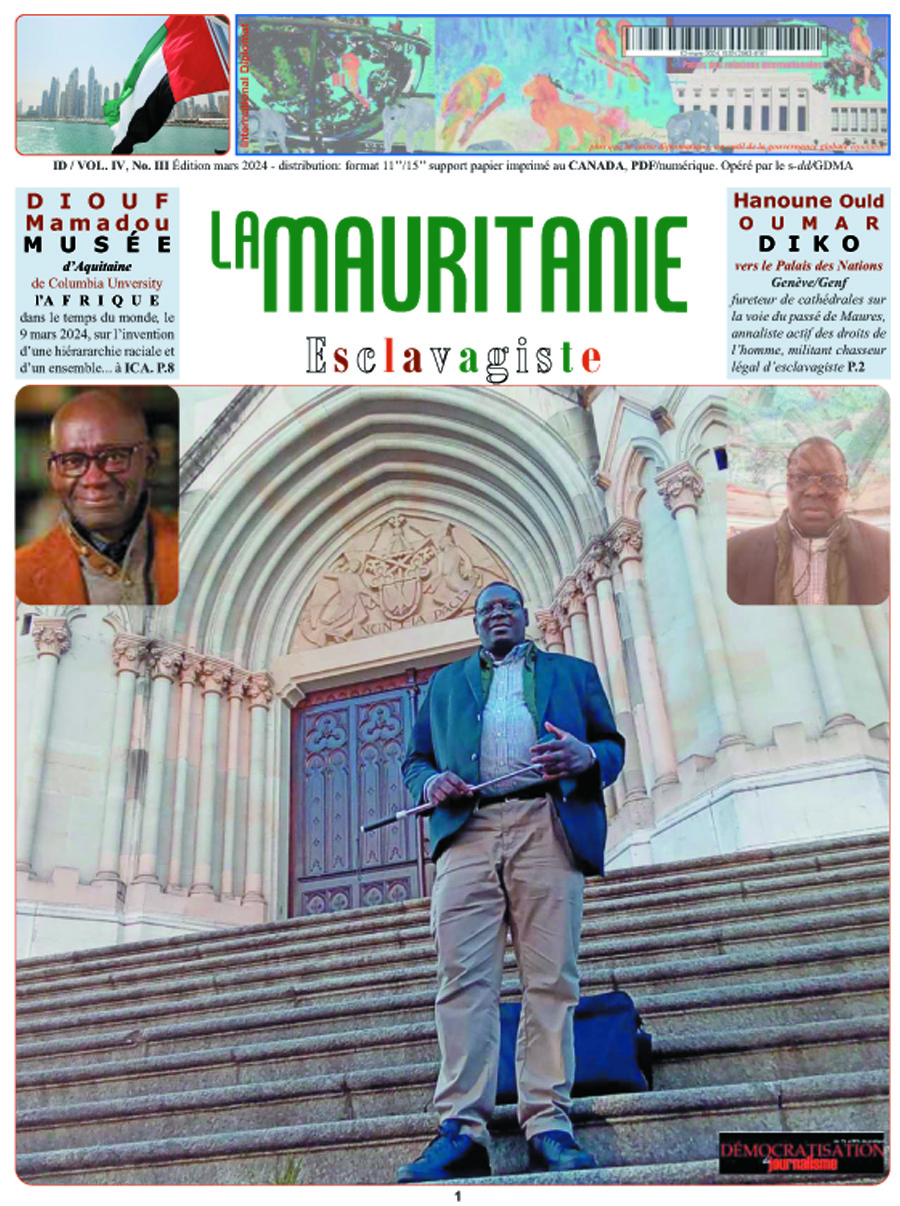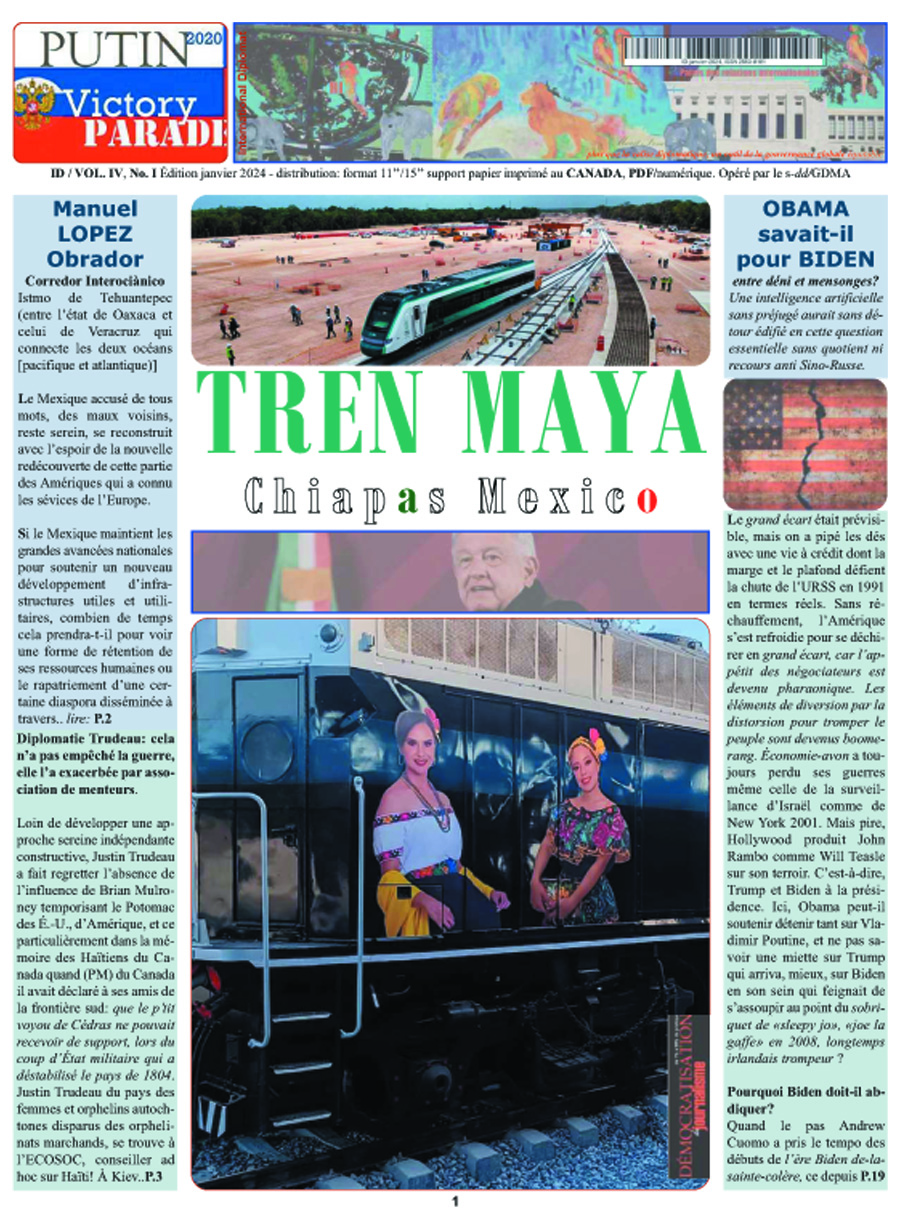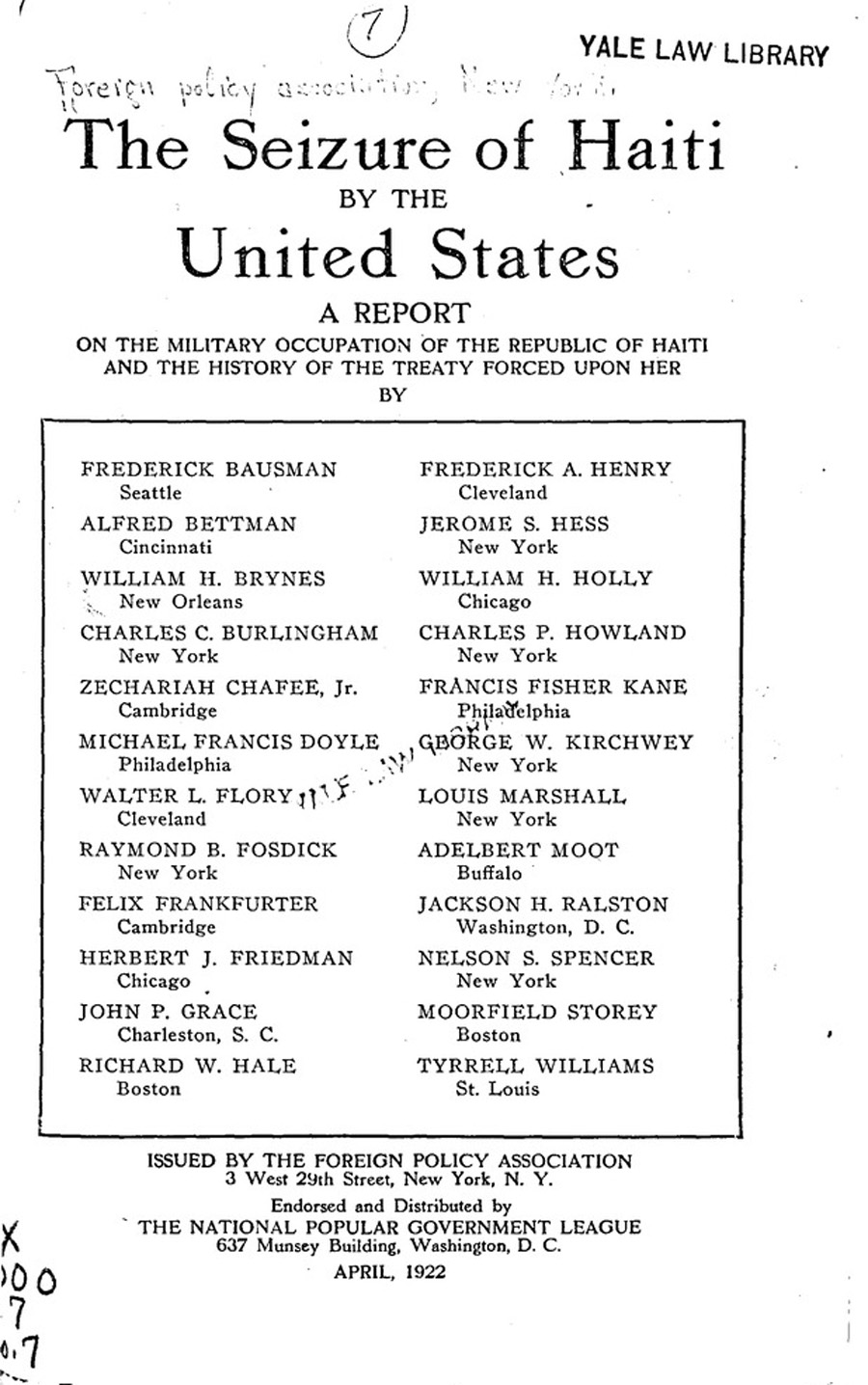 Q: You are the Director of the United Nations Library in Geneva, built with funds from the United States. Could you tell us a little about its history?
Q: You are the Director of the United Nations Library in Geneva, built with funds from the United States. Could you tell us a little about its history?
This is a very good and timely question, because on 10 September 2012 we celebrate the eighty-fifth anniversary of the gift from John D. Rockefeller Jr. to the League of Nations Library. The Library had already existed since 1919 when, in 1927, Rockefeller gave US$2 million to endow a library that would serve as a centre for international research and international understanding.
I have the privilege of directing the library donated by Rockefeller. When the League of Nations ceased to exist in 1946, all the assets of the League were transferred to the United Nations. Nowadays, the Library continues to serve the objective that Rockefeller’s gift had set for the library of the League of Nations. I’m very proud of this image –– we have a plaque in the Library to commemorate this event.
On 10 September we are opening a new reading room –– the John D. Rockefeller, Jr. League of Nations and United Nations Archives Reading Room. It’s a refurbished room –– the biggest and best-located reading room in the Library. The UN Secretary-General, Ban Ki-moon, and the great-grandson of John D. Rockefeller Jr., Michael Rockefeller, will attend the inauguration. It’s a big year and a big September for us!
Q: As a member of the League of Nations, could you tell us about Norway’s contribution?
While not being a founding member of the League of Nations, Norway joined in 1920, soon after its creation. If there was any need to make up this lost year, Norway made it up in spades. The most famous Norwegian is, of course, Fridjof Nansen. He was not only a Polar explorer, a scientist but also a committed internationalist. Many people become famous, but there are only a handful who leave something for eternity. Nansen was what I would call a “game changer”, a person who does things that nobody has done before and who lays the foundations for something that sixty, seventy or eighty years later continues to develop.
Nansen was the first High Commissioner for Refugees. He was appointed in 1920, reappointed in 1921 and kept his job until his death in 1930. He first worked on the return of prisoners of war blocked around the world after the First World War. Then he dealt with the refugees and managed to protect almost 500,000 people who were obliged to cross borders. At the time this was a huge number of people.
There is something that he created that nobody had thought of before. For many refugees, their status is made worse by the fact that they do not have any papers. They are stateless and paperless people, so Nansen created what became known as the “Nansen Passport” in order to give these people an identity. We have a copy in our League of Nations Museum. This was a document that prevented them from being sent back home. They were international refugees and he gave them that status. What Nansen created later formed the basis of what we know today as the United Nations High Commissioner for Refugees –– an organization that takes care of a very large number of refugees in the world, numbered in millions. For one person, come to think of it, even for an entire organization, Nansen’s contribution was a huge –– a worldwide, cross-border, cross-disciplinary kind of historical contribution. Nansen received the Nobel Peace Price in 1922.
There are a couple of other famous Norwegians –– very important figures but not of the same calibre. There was Christian Lange who was a great specialist in disarmament. In 1932 the first international disarmament conference took place attended by sixty-four countries. Lange carried out a lot of work there as a member of the Norwegian delegation. Then he was made Chairman of the Naval Armament Committee, which was one of the key committees. In those days, naval armament was basically strategic arms. Nuclear weapons had not yet been invented, and there were no intercontinental bombers, so the world was ruled by countries that had large navies.
Lange also received the Nobel Peace Prize in 1921. From the opening of the League of Nations until his death, Lange was a delegate or an alternate delegate from Norway, always a standing adviser. He did a lot of work on the Sino-Chinese conflict. In 1932 the Japanese invaded Manchuria and then continued to occupy the rest of China. It was the hot topic and major conflict of that time.
Then there is another famous gentleman, Carl Johan Hambro. He also had quite a lot of interesting jobs in the machinery of the League of Nations. For instance, he was the President of the last session of the General Assembly of the League of Nations and made the final closing speech.
We have a Norwegian gem here in the Library which we value very much, and for which we are very grateful to the Norwegian Government. In 1939 Norway gave to the League an absolutely breathtaking mural fresco called “Dreams of Peace” by Henrik Sorensen, a Norwegian artist. It was very relevant to the situation between the two wars –– looking back and but also towards the future. Nobody could have anticipated how horrible the immediate future would be. It is located in our largest room which used to be our loans room. Since the library’s functions have changed, the former loans functions have been incorporated elsewhere, which has allowed us to use this biggest and probably the most beautiful room for what Rockefeller originally intended –– the Centre for International Understanding. We host panel discussions and symposia, as well as receptions during conferences, etc.
Q: Does the painting need to be restored?
The painting is in fact unfinished because Sorensen never had time to complete it, but nevertheless it’s still a masterpiece.
When you have a painting like that, the place where it is exhibited it is very important. The room itself is beautiful, but needs renovation. We are doing our best according to the funding we have available from the United Nations regular budget. We do not have any extra-budgetary funds though.
The UN Member States are in financial difficulty. They fund the UN through the regular budget, and the Secretary-General wants to get the Regular Budget under control. He has therefore indicated that it is unethical to contact Member States asking for extra-budgetary funds.
Upon my appointment to this position, I have been looking actively for funding from private foundations, individuals or even companies. The Rockefeller Reading Room I mentioned we redecorated with our own means. Thus, we are looking to build on public partnerships, because it is a formula that has worked well in many places around the world. To express our appreciation to such a donor, we can memorialize the name of the person, or institution, as we did with the plaque honouring John D. Rockefeller, Jr.’s very significant gift.
Q: What exactly does the room need?
Basically, it needs not only a fresh coat of paint but it also needs to be brought up to modern standards. We need, for instance, wifi and interpretation technology to be provided –– everything that a modern medium-sized conference room/event room needs. Forgive me for acting like a salesperson here, but you did ask me about the refurbishing!
Here I am talking to you about the needs of physical restoration, when we have the entire League of Nations archive needing to be digitized. This is incredibly important so that readers who are interested in the history of multilateralism and in the work of the United Nations can consult the documents from a distance, without having to be on the premises in Geneva.
The Nansen Archives were microfilmed with assistance from the Norwegian Fritt Ord Foundation. Altogether 300 boxes in the Archives were microfilmed. Then, with the assistance of the National Norwegian Archives, these were then digitized producing over 300,000 images. However, the sad thing is that these images are still not accessible on the web, because we need funds to curate these images, to go through them, classify them and put them on the website.
There are three stages to any digitization process, then the curation of what you have and putting it on the website. We have 3,000 linear metres of archives, and we have digitized at best maybe one-tenth. There is no money in the UN regular budget for this work, so we are trying to carry out a little of this work whenever we receive a small donation.
The gift from Rockefeller in 1927 that I mentioned earlier was such a large sum that, in accordance with Rockefeller’s wishes, part of the funds were used to build this building and to endow the library, while the other part was invested. Every two years, we receive interest from that money. In the last biennium, we received a US$149,000 from that original donation. We used it to digitize about sixty-two linear metres of the archives.
Thus, if we managed to digitize sixty-two metres with roughly US$150,000, it is not difficult imagine what is needed for 3,000 metres! You see how much it would cost! But it is our heritage –– the intellectual memory of the world.
Q: Do you think that the Norwegian Government and Norwegians in general are aware of the treasures in your possession?
The Norwegian Government and the Norwegian National Archives have helped us very much in the past with the Nansen archives. I have mentioned to the Norwegian Ambassador that I would like show him the new plan of the loans room and Sorensen’s fresco. He told me that he was planning to see it –– and I’m sure he will. I do not think that Norway has forgotten us, but they might have other priorities. I personally have not asked Norway as a Member State to intervene because of what I mentioned earlier about Member States financing the United Nations through their dues, etc.
However, as you observed, when you have this kind of gem sitting here, there might be some expectations from the country of provenance.
Q: If people would like to help you to save the Norwegian heritage, what could they do?
They could do a number of things. First of all, I would be very happy to welcome anyone who would like to visit Geneva in general and the Palais in particular. It is a fascinating place. I would love to show people some of the treasures that we have here, including the original certificate of the Nansen Nobel Peace Prize.
While there are mechanisms through which one can make a contribution, it would be premature of me to give out a bank account number. But, there is a dual interest here. Of course, it would be good to have some support in maintaining this collection. It would be wonderful if there were some financial support, but just making it known that we are the custodians of such interesting artefacts is satisfying in itself. As I said, this is not only a Norwegian heritage. It was for this reason that, in 2009, the League of Nations Archives were made part of UNESCO’s World Heritage List.
It’s a treasure trove. Apart from that, we also have a bona fide major library. We are not as huge as the Library of Congress in Washington, but it’s actually similar in its concept. Our library was designed to serve the staff, members of the League of Nations and Member States. Similarly, the UN Library continues to serve staff members, Member States and researchers, and has become the intellectual repository of knowledge institutional memory of the UN system in Europe. It is much more than a library, much more than an archive –– it’s also a place which manages the cultural activities of the United Nations European Office. More than 100 events a year take place here. Member States bring their best talents –– painters, musicians, dancers –– it is wonderful way of learning about different cultures.
In the course of a year, you would see more cultural activity, more cultural events here than you would if you travelled around the world. We are also a centre for intellectual exchange, like holding panel discussions on many different topics ranging from technical issues, to peace building and trade-related issues. We are strengthening the intellectual capacity of the UN here in Geneva just as Rockefeller wanted.
Walking out of the old, impressive building containing so much of our common history, I nurture the hope that somewhere out there there may be one, two or more generous souls. Wouldn’t it be nice if we could get a Nansen Room in the UN Library in Geneva, where all his documents would be accessible to humanity through the web? Just wondering…
Albina Goosens





